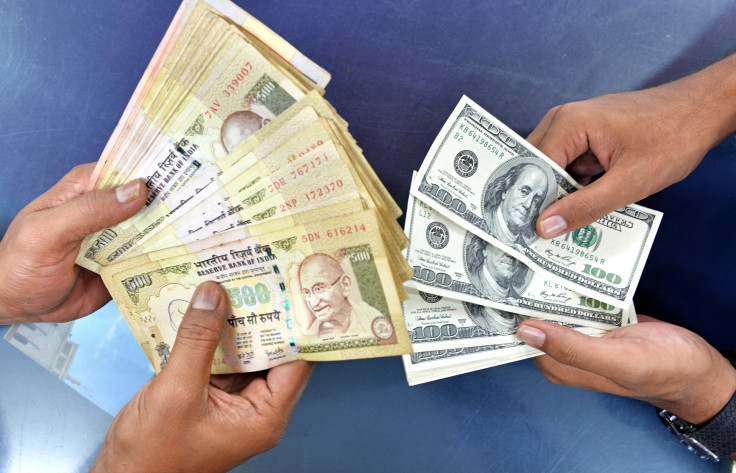Currency Moves: Indian Rupee Falls To 2.5-Year Low Against Dollar, Other Asian Currencies Weaken Too

Taking cues from other Asian currency markets and affected by a combination of various domestic factors, the Indian rupee slumped to its lowest level in 30 months against the U.S. dollar Wednesday.
In trade late Tuesday/early Wednesday, the Indian currency breached a low of 68.66 to the dollar, its weakest since Aug. 28, 2013, when it made a record low of 68.85 against the U.S. currency. At about 1:00 a.m. EST Wednesday, it had recovered somewhat to trade at about 68.6.
Foreign portfolio investors sold equities worth 9.64 billion rupees (about $140 million) Tuesday, according to provisional data from the Bombay Stock Exchange, the Economic Times reported. The forex outflow was combined with an increased demand for the dollar from importers, according to the Hindu Business Line.
A fall of about 1 percent in early trade on the Bombay Stock Exchange contributed to the negative rupee sentiment amid reports that India’s central bank, the Reserve Bank of India, had intervened to check the rupee’s fall by selling dollars around the 68.61 level through state-owned banks.
“On the currency front, there is a lot of stress and there is a possibility that dollar-rupee can go higher from here,” Bhaskar Panda of HDFC Bank told the Economic Times.
The dollar has been gaining strength in the last few days, with the dollar index — which tracks its movement against a basket of six foreign currencies — climbing above 96.7 early Wednesday from 95.56 on Feb. 11.
In early Wednesday trade, the greenback gained over 1.5 percent against the Malaysian ringgit, almost 0.9 percent against the Korean won and 0.8 percent against the Indonesian rupiah. The Taiwanese dollar fell about 0.5 percent, while the Philippine peso and the Singapore dollar lost about 0.3 percent and 0.16 percent, respectively.
“There is an increasing bias towards policy easing in the region, and we’re looking for rate cuts in China, India, Indonesia and Korea. That will undermine currencies in the region,” Mitul Kotecha, head of Asian foreign-exchange and interest-rate strategy at Barclays in Singapore, told Bloomberg.
The Japanese yen was the exception among Asian currencies, with the dollar losing 0.25 percent against the yen. In the past two weeks, the yen has gained almost 7 percent against the dollar.
© Copyright IBTimes 2024. All rights reserved.





















